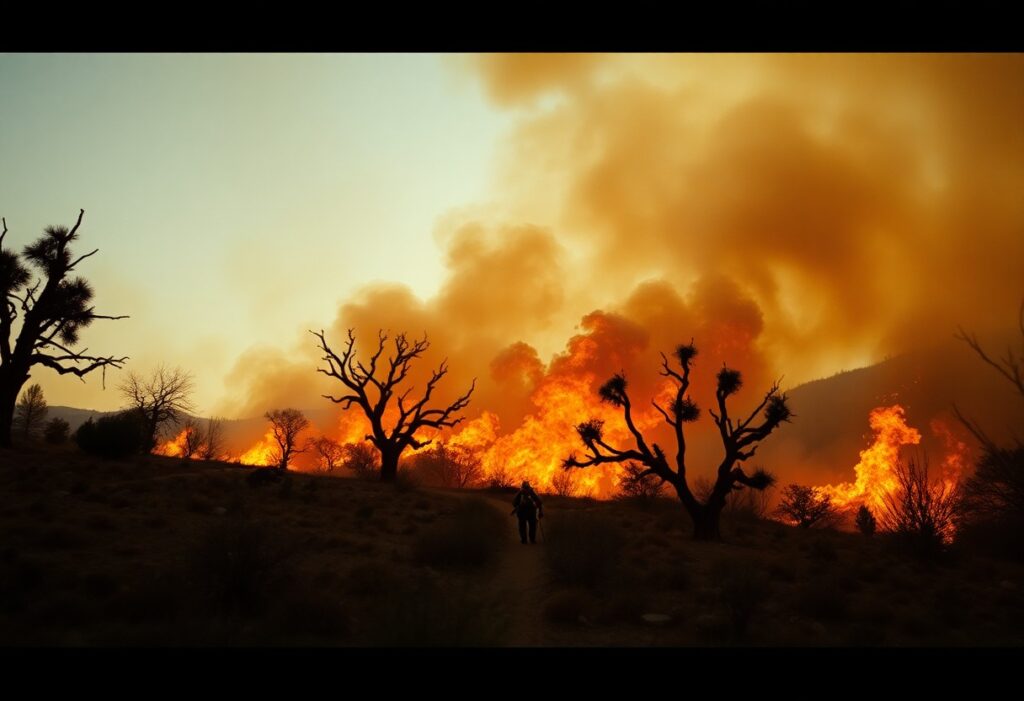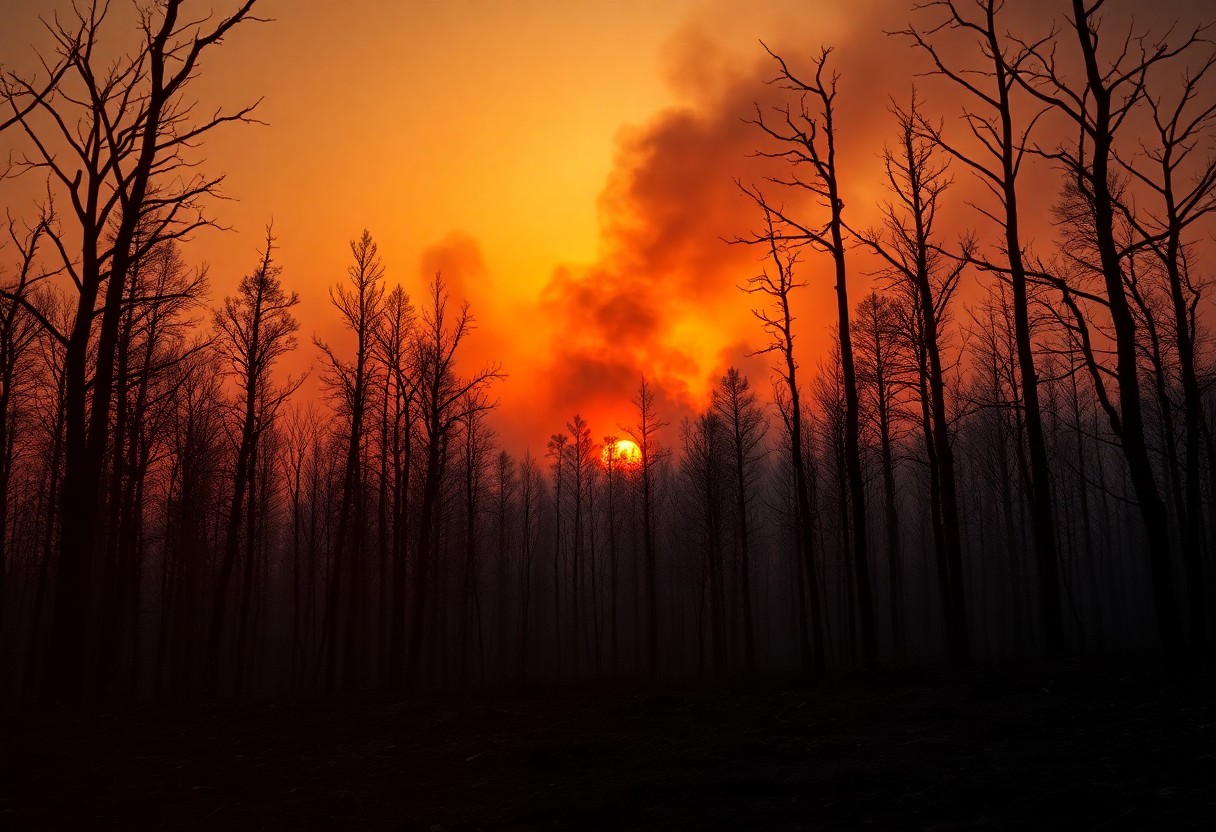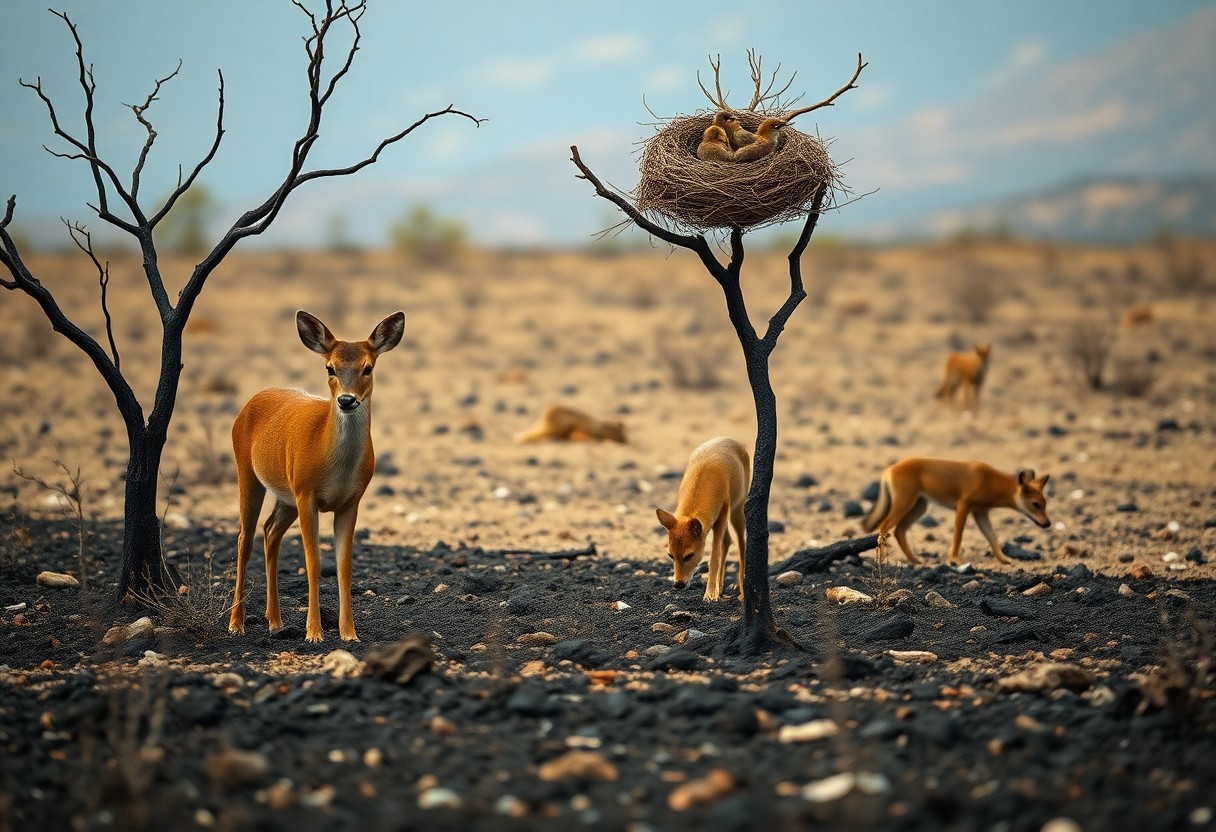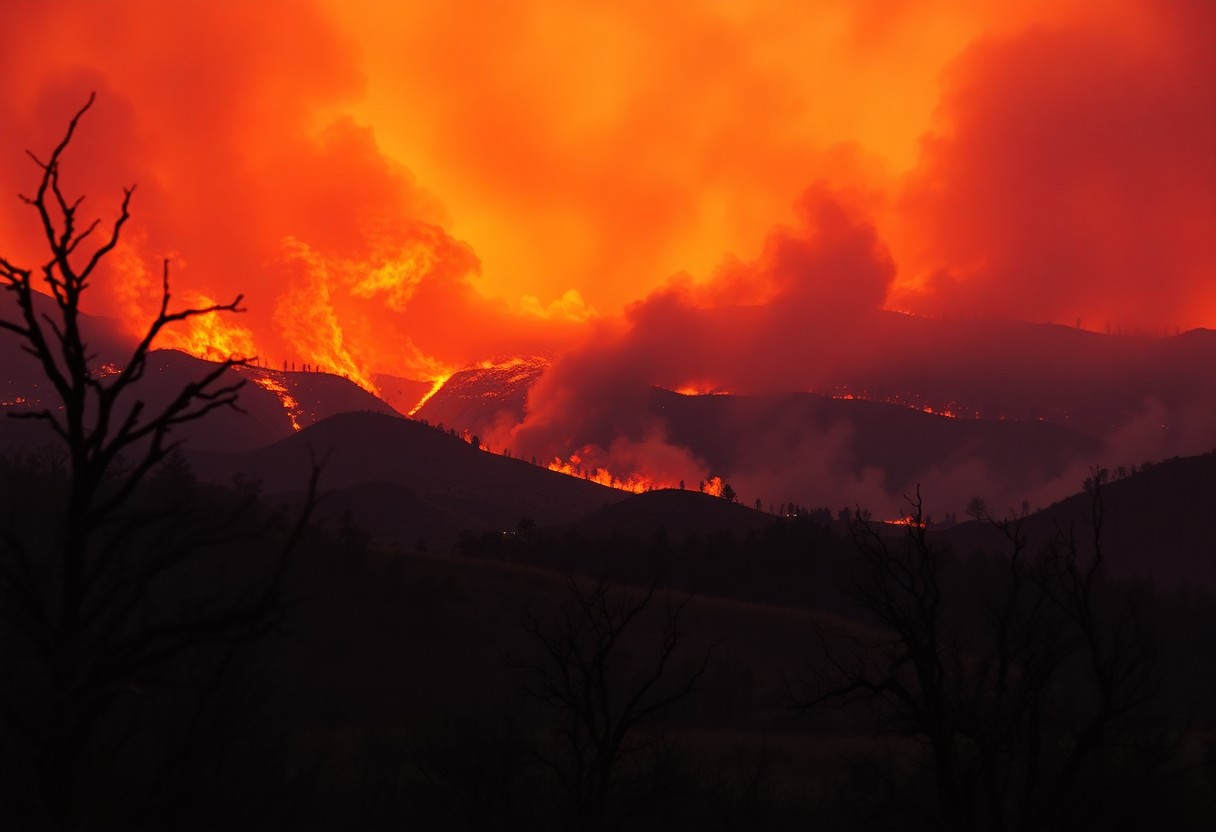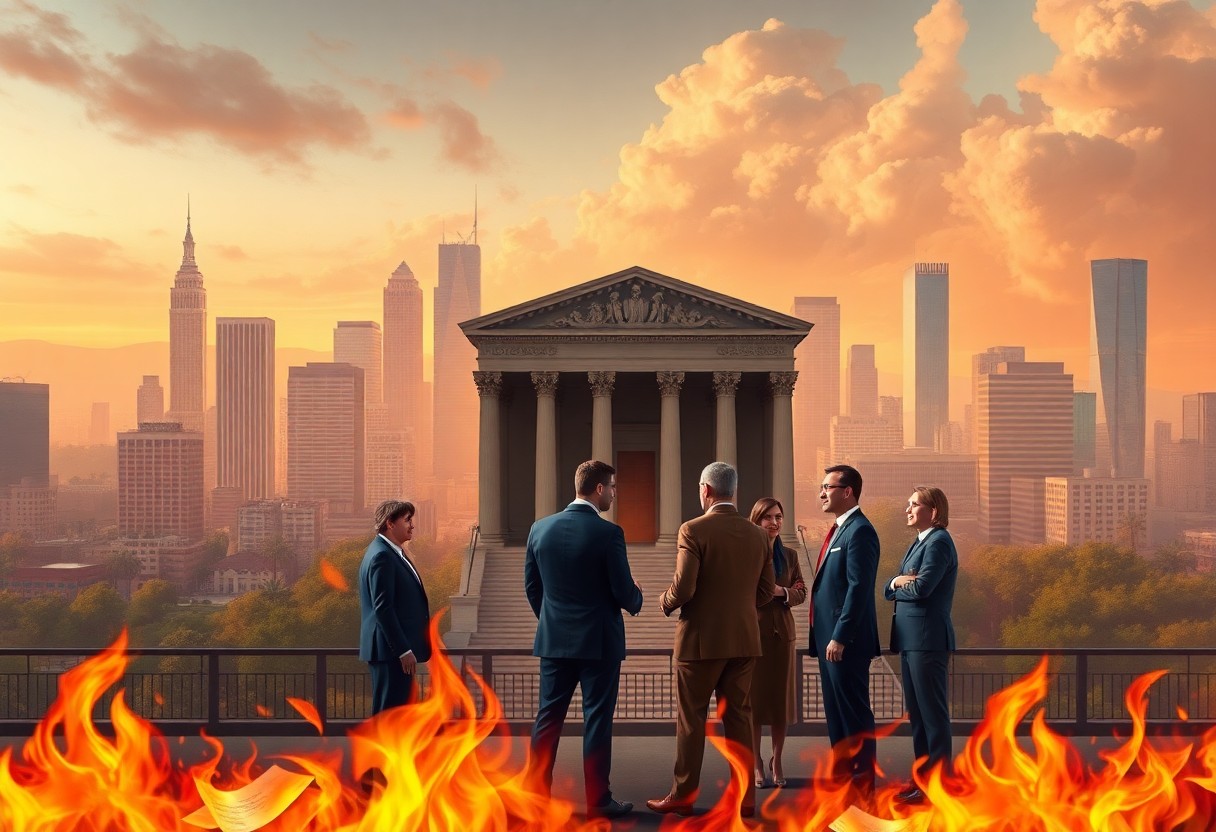There’s an urgency you must understand regarding the devastating wildfires that frequently impact Los Angeles. These catastrophic events are largely caused by factors such as drought conditions and strong winds, which create a perilous environment for fire outbreaks. The consequences of these wildfires are not only environmental but also deeply affect communities, wildlife, and air quality. By exploring the underlying causes and understanding their alarming effects, you can grasp the broader implications of these wildfires and what it means for your safety and the ecosystem.
Causes of the Wildfires
The impact of wildfires in Los Angeles can be attributed to several underlying factors that intertwine with the region’s environment and human activity. Specifically, a combination of dry weather, excessive vegetation, and human oversight all contribute to the ignition and spread of these devastating fires.
Climate Change
Causes stemming from climate change play a significant role in the increasing frequency and severity of wildfires. Rising global temperatures and prolonged droughts diminish moisture in vegetation, making it easier for fires to start and spread in your region.
Urban Development
About urban development in previously wild areas has escalated the risk of wildfires. As you encroach on natural habitats, more homes and businesses are placed in high-risk zones, increasing exposure to fire hazards and restricting your access to escape routes.
Considering the growth of urban sprawl, the interface between residential areas and wild landscapes has become dangerously close. You might find yourself living near dense, dry brush that is highly flammable, significantly raising the potential for fire ignitions triggered by the slightest spark. The consequences can be disastrous for your property and community.
Deforestation
Above all, deforestation exacerbates the wildfire situation by reducing the number of natural barriers that can slow or stop the spread of flames. Fewer trees and plants mean there is less moisture and more fuel for fires to consume in your area.
Understanding how deforestation impacts wildfires is imperative for recognizing its broader consequences. When you clear land for agriculture or development, you not only remove vital vegetation but also disrupt local ecosystems. This leads to an increase in dry, open spaces, providing more fuel for fires to unleash their fury, further endangering your neighborhood’s safety and well-being.
Impact on the Environment
You may not realize the profound impact of wildfires on the environment. The devastating fires in Los Angeles not only obliterate landscapes but also disrupt ecosystems. Soil erosion, water cycle changes, and habitat destruction are immediate consequences, leading to long-term ecological distress. The scars left on the land can take years, if not decades, to heal, affecting both flora and fauna in the region.
Air Quality
For those living in and around fire-stricken areas, air quality deteriorates significantly due to smoke and pollutants released into the atmosphere. Particulate matter and toxic gases can cause respiratory issues and exacerbate pre-existing health conditions. The noxious air can travel hundreds of miles, affecting communities far from the flames and posing widespread health risks beyond the immediate fire area.
Loss of Biodiversity
Along with immediate destruction, wildfires lead to a severe loss of biodiversity. Many plants and animals that inhabit these ecosystems are left vulnerable, and some may face extinction as their habitats are decimated. The repercussions of this loss can be felt throughout the food chain, disrupting the natural balance.
Further exacerbating the situation, species that rely on specific habitats struggle to adapt to rapidly changing environments, potentially leading to a decline in populations and disruption of ecological processes. The diminished biodiversity can hamper ecosystem services like pollination, water purification, and soil stability, paving the way for a less resilient environment. Its effects ripple through the ecological network, altering species interactions and diminishing nature’s capacity to recover from future disturbances. You must acknowledge these consequences as they are fundamental in understanding the bigger picture of wildfire impacts.
Economic Consequences
Once again, the devastating wildfires in Los Angeles have inflicted significant economic damage on the region, disrupting local businesses and costing millions in recovery efforts. As highlighted in California wildfires: What we know about L.A.-area fires …, the financial impact extends beyond immediate losses, affecting tourism, property values, and community infrastructure.
Property Damage
Above all, the wildfires have resulted in extensive property damage, displacing countless residents and leading to irreversible losses. Homes, public spaces, and businesses have been devastated, leaving entire neighborhoods to pick up the pieces.
Cost of Firefighting
To combat these wildfires, significant resources are required, with firefighting costs reaching unprecedented levels. The allocation of funds for firefighting operations not only strains local budgets but also diverts resources from other community services.
Due to the nature of wildfires, the costs associated with firefighting can skyrocket, with estimates often exceeding $100 million per incident. Local and state agencies mobilize thousands of firefighters, along with vital resources like aircraft and specialized equipment, to combat these blazes. The financial burden can take years to mitigate, affecting your community’s infrastructure and leading to a long-term economic strain. The urgent need for funding and resources highlights the importance of preparedness and support for firefighting efforts to protect both lives and your economic stability.
Social Implications
After devastating wildfires sweep through Los Angeles, the social fabric of affected communities unravels. The emotional toll, collective trauma, and disruption of daily life leave long-lasting scars. You may notice strained relationships among neighbors and a decline in community engagement as people prioritize recovery and rebuilding. The crisis often fosters a sense of isolation, making support networks more crucial than ever as residents grapple with the aftermath.
Displacement of Residents
On the brink of losing their homes, countless residents find themselves displaced, seeking refuge in temporary shelters or with friends and family. This upheaval disrupts lives and creates uncertainty, as many struggle to secure stable housing while grappling with the emotional consequences of leaving their communities behind.
Health Issues
Between the toxic smoke and the stress of displacement, your health can significantly deteriorate during wildfires. The increase in air pollution often leads to respiratory issues, while mental health challenges, such as anxiety and depression, escalate due to loss and uncertainty.
In addition, air quality plummets when wildfires rage, causing a surge in cases of chronic conditions like asthma and bronchitis. You might experience symptoms such as coughing, sore throat, and eye irritation, affecting your day-to-day activities. Moreover, the emotional distress can lead to long-term health complications, including post-traumatic stress disorder (PTSD), making it imperative to address these concerns promptly. Prioritizing mental health support and adopting protective measures can help you cope during these trying times.
Response and Recovery Efforts
Not only do communities band together during wildfires, but they also come together for recovery efforts that are vital for healing. Local governments, organizations, and volunteers work tirelessly to restore the areas impacted by the devastating blazes, providing assistance to those who have lost their homes and livelihoods. Initiatives such as mental health support and rebuilding programs are implemented to ensure that you and your neighbors can regain a sense of stability and hope.
Government Initiatives
Efforts are continuously made by government agencies to tackle the aftermath of wildfires through emergency response programs and funding for recovery projects. These initiatives focus on restoring infrastructure, enhancing forest management, and increasing firefighting resources to prevent future disasters. By allocating significant resources and coordinating with local agencies, governments strive to support you in rebuilding your community.
Community Action
Above all, community action plays a pivotal role in recovering from the impacts of wildfires. Local residents often come together to aid those affected, offering services such as shelter, meals, and emotional support. Volunteer groups are instrumental in organizing clean-up efforts and fundraising campaigns to assist with rebuilding efforts.
To effectively support recovery after wildfires, communities often mobilize volunteers to assist in clean-up efforts and provide emotional support for those impacted. Neighborhood groups may hold fundraisers to collect donations for supplies, facilitate shelters, or share resources to help individuals and families start anew. Your involvement can make a significant difference in the recovery process, ensuring that members of your community feel connected and supported during their time of need.
Future Outlook
Keep in mind that as climate change progresses, the frequency and intensity of wildfires in Los Angeles are expected to increase. However, enhanced public awareness, community engagement, and technological innovation can help mitigate these disasters. Investing in better infrastructure and resources will be vital to protecting both people and the environment in the future.
Prevention Strategies
The implementation of effective prevention strategies is imperative for reducing the risk of wildfires. You can engage in local efforts such as creating defensible space around your property, participating in community fire-safe programs, and supporting controlled burns, all of which can significantly lower the chances of wildfire outbreaks.
Policy Recommendations
An effective policy framework is necessary to address the ongoing threat of wildfires. You should advocate for increased funding in fire prevention programs, improved land-use policies, and stricter regulations on fire-prone developments. These measures will enhance community resilience and environmental stability, ultimately leading to safer living conditions.
Understanding the importance of these policies can lead to a more proactive approach in wildfire management. By emphasizing increased funding in fire prevention programs, for instance, you are supporting initiatives that strengthen local ecosystems and reduce fire hazards. Furthermore, advocating for improved land-use policies ensures that new developments are not built in high-risk areas, thereby protecting both the community and the environment. It’s imperative that you push for these stricter regulations to foster a collective responsibility towards fire safety, ensuring a sustainable and safer future for all.
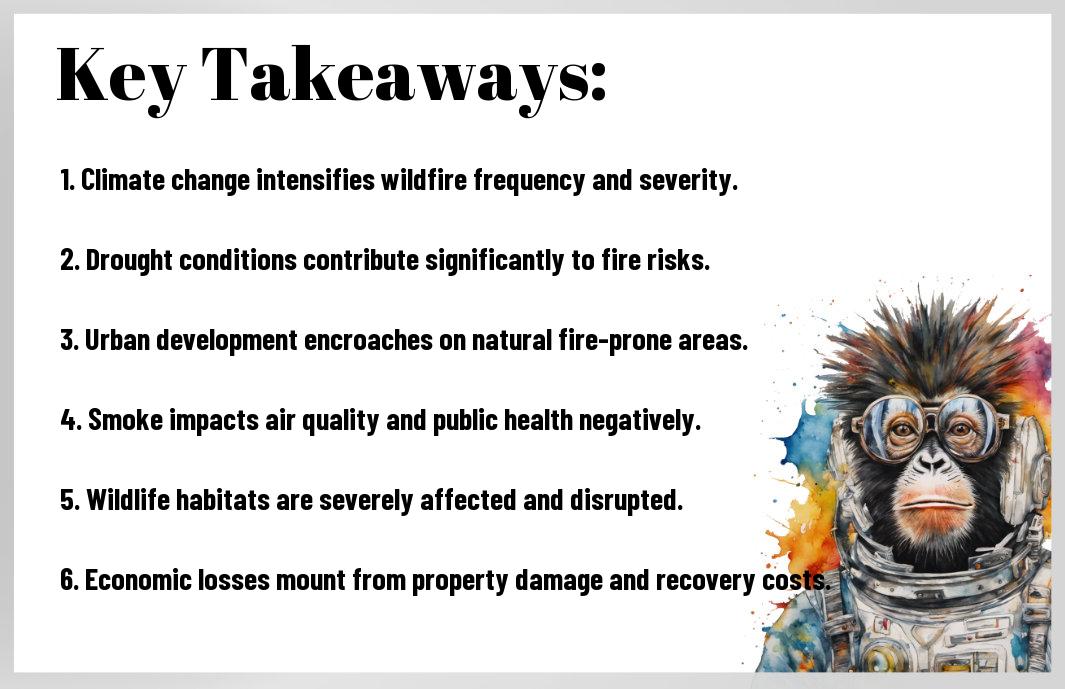
To wrap up
Now that you’ve explored the causes and impacts of the devastating wildfires in Los Angeles, it’s clear that both natural and human factors play a significant role in these disasters. Understanding these elements can empower you to take steps in your own life to reduce risk and promote wildfire awareness. Each fire leaves a lasting mark on the environment and the community, affecting air quality, wildlife, and even real estate. By staying informed, you can contribute to ongoing discussions around prevention and resilience strategies in your area.


